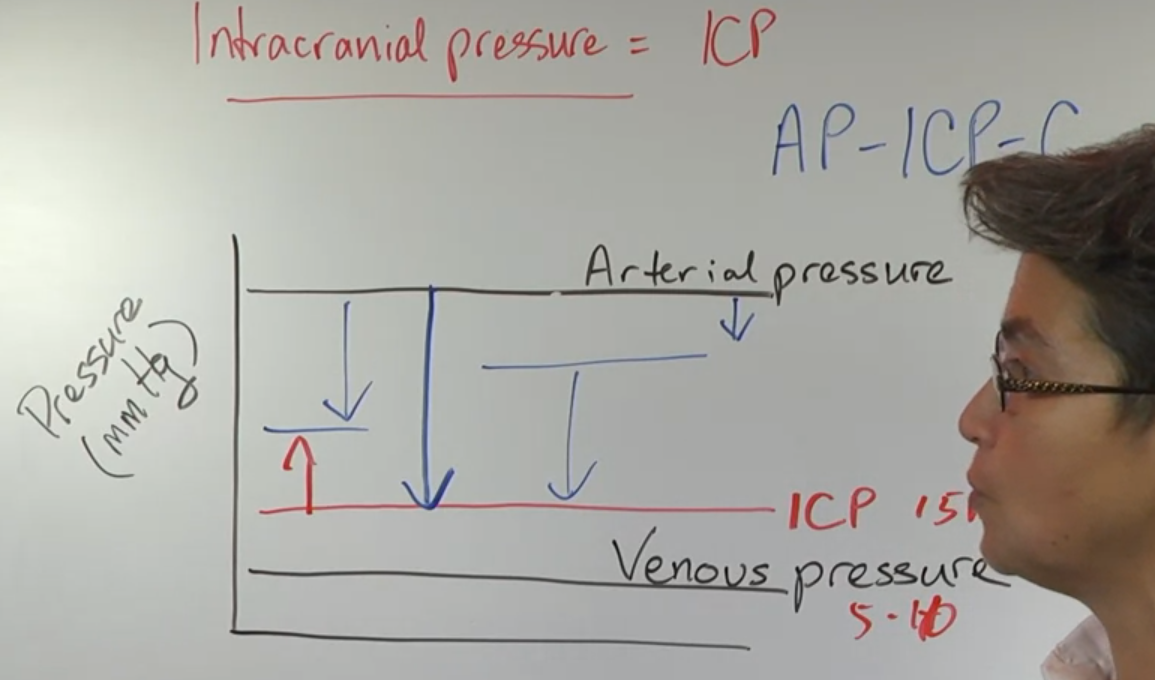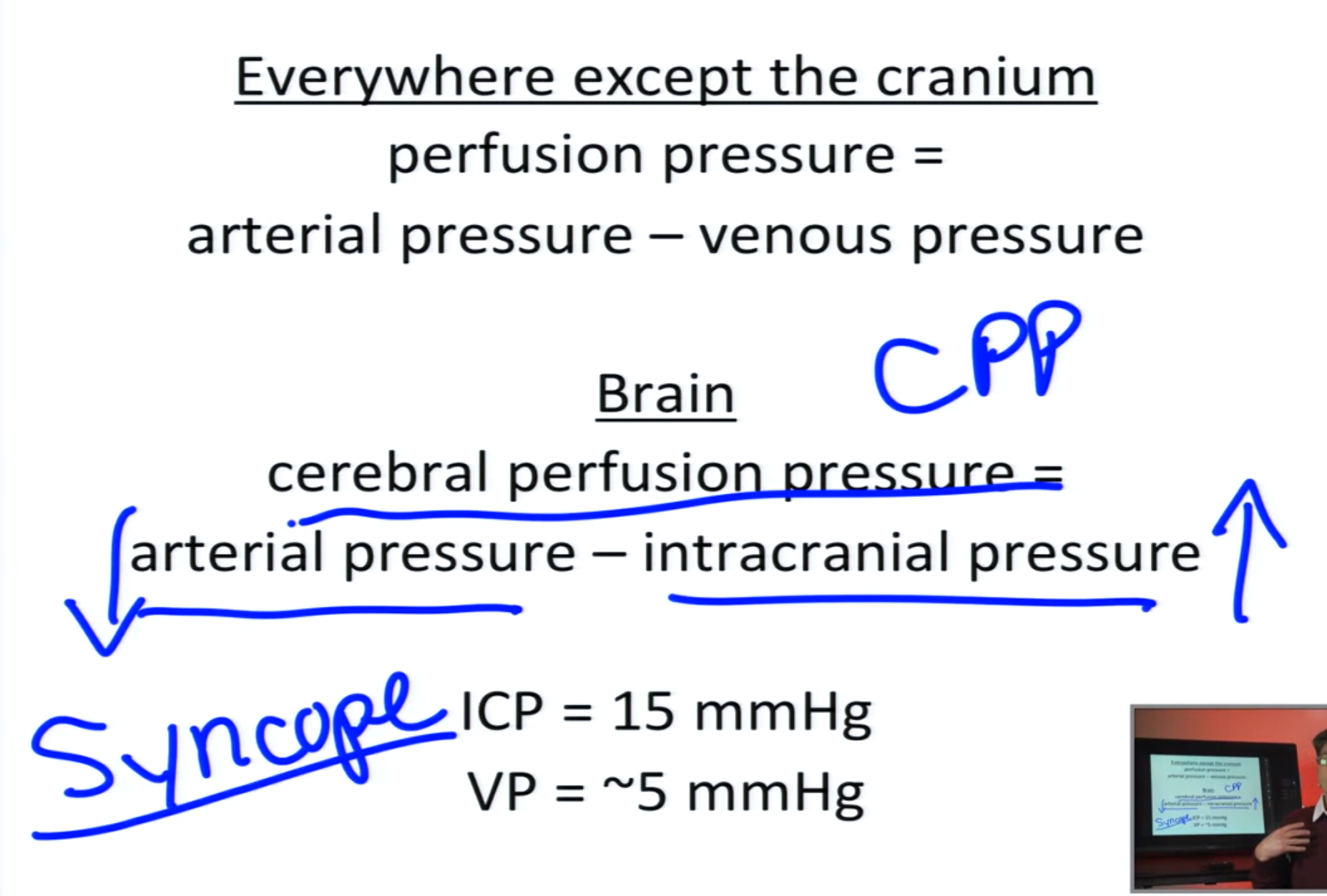
 This lecture discussed the brain’s critical need for oxygen and how disruptions in blood flow can lead to brain lesions.
This lecture discussed the brain’s critical need for oxygen and how disruptions in blood flow can lead to brain lesions.
Key Points:
- The brain, despite being 2% of body mass, uses 25% of our oxygen.
- Unlike other tissues, brain cells (neurons) cannot regenerate if they die due to oxygen deprivation.
- This vulnerability is evident at high altitudes where reduced air pressure limits oxygen intake, causing acute mountain sickness.
Blood Flow and Cerebral Perfusion Pressure (CPP):
- Blood flow in most organs depends on the difference between arterial and venous pressure.
- Inside the skull, however, intracranial pressure adds another factor.
- Due to high intracranial pressure, cerebral perfusion pressure (CPP) relies on the difference between arterial pressure and intracranial pressure, not arterial and venous pressure.
- Low CPP due to either a drop in arterial pressure or a rise in intracranial pressure can lead to insufficient blood flow to the brain.
Consequences of Disrupted Blood Flow:
- Insufficient blood flow (ischemia) deprives neurons of oxygen, leading to cell death and brain lesions.
- Symptoms of low CPP include fainting (syncope) due to loss of consciousness and inability to maintain posture.
Next Lecture:
- The lecture will explore the blood supply to the brain in detail.